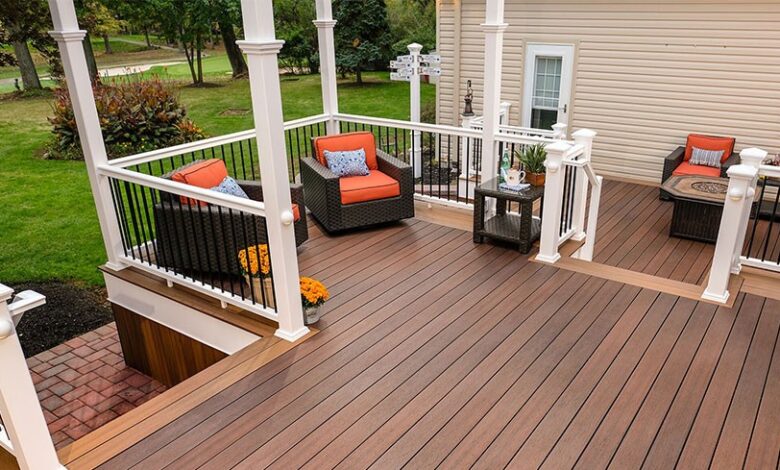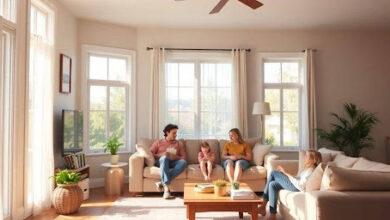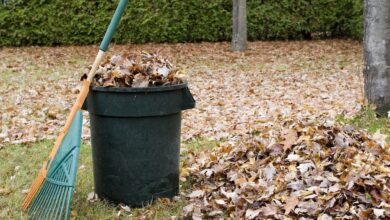Vinyl vs. Wood Decking: Which Is Better for Your Home?

When it comes to building or renovating a deck in Canada, one of the most important decisions homeowners face is choosing the right decking materials. With so many options available, it can be overwhelming to decide between vinyl and traditional alternatives.
Vinyl decking and wood decking are two popular options, each with its own set of benefits and drawbacks, notes property management Fort Worth TX. In this article, we will explore the pros and cons of each material, helping you make an informed decision for your Canadian home.
By discussing the durability, maintenance requirements, and aesthetic appeal of both vinyl and wood options, we aim to guide you through the decision-making process.
Understanding Deck Materials for Canadian Homes
Canadian homeowners face a unique challenge in selecting the right decking material due to the country’s diverse and often harsh climate. The choice between vinyl and wood decking is not just about aesthetics; it’s also about durability and maintenance.
Impact of Canadian Climate on Decking Choices
The Canadian climate varies significantly from one region to another, with extreme cold in the winters and warm summers. This variability means that decking materials must be able to withstand heavy snowfall, freezing temperatures, and occasional heatwaves. Durability in the face of such climatic conditions is paramount.
The weather conditions in Canada can lead to issues such as warping, cracking, and rotting of decking materials if they are not appropriately chosen. For instance, wood decking may require more maintenance to prevent damage from moisture and extreme temperatures.
Key Factors in Material Selection
When choosing decking materials, several factors come into play. These include:
- Durability: How well will the material withstand the Canadian climate?
- Maintenance Requirements: What kind of upkeep is needed to keep the deck in good condition?
- Aesthetic Appeal: How will the decking material enhance the overall look of the home?
| Material | Durability | Maintenance | Aesthetic Appeal |
| Wood | Moderate | High | High |
| Vinyl | High | Low | Moderate |
Long-term Investment Considerations
While the initial cost of decking materials is a significant factor, it’s equally important to consider the long-term costs, including maintenance, repairs, and potential replacement. Vinyl decking, although potentially more expensive upfront, may offer savings in the long run due to its durability and low maintenance requirements.
Understanding these factors can help homeowners make an informed decision that balances their immediate needs with long-term considerations.
Traditional Wood Decking: Benefits and Considerations
Traditional wood decking has been a staple in Canadian homes for decades, offering a unique blend of durability and aesthetic appeal. For homeowners considering decking options, understanding the benefits and considerations of traditional wood decking is essential.
Types of Wood Decking Available in Canada
Canada offers a variety of wood decking options, each with its unique characteristics. The most common types include:
- Pressure-treated wood, known for its durability and resistance to rot and insects.
- Cedar, valued for its natural resistance to decay and insect damage, as well as its attractive appearance.
- Redwood, another durable option that is naturally resistant to rot and insects.
Each type of wood has its benefits and drawbacks. For instance, pressure-treated wood is cost-effective but may contain chemicals. Cedar and redwood offer natural beauty and durability but at a higher cost.
Natural Aesthetic Appeal
One of the primary advantages of traditional wood decking is its natural aesthetic appeal. Wood decking can add warmth and character to outdoor living spaces, creating an inviting atmosphere for family and friends. The natural beauty of wood can be enhanced with various stains and finishes, allowing homeowners to personalize their deck’s appearance.
Cost Analysis and Return on Investment
When considering wood decking, it’s crucial to conduct a thorough cost analysis. The initial cost of wood decking can vary significantly depending on the type of wood chosen. Additionally, maintenance, repair, and potential replacement costs should be factored into the overall cost.
| Type of Wood | Initial Cost | Maintenance Cost (Annual) | Lifespan |
| Pressure-Treated Wood | $3 – $5 per sq. ft. | $100 – $200 | 10 – 15 years |
| Cedar | $5 – $7 per sq. ft. | $150 – $300 | 15 – 20 years |
| Redwood | $7 – $10 per sq. ft. | $200 – $400 | 20 – 25 years |
Despite the potentially higher upfront and maintenance costs, wood decking can offer a significant return on investment. A well-maintained wood deck can enhance a home’s value and appeal, making it a worthwhile consideration for homeowners.
Vinyl Decking: Modern Solutions for Canadian Weather
Vinyl decking is revolutionizing outdoor living in Canada with its modern appeal and robust performance. This decking material is designed to withstand the harsh Canadian weather, providing homeowners with a durable and low-maintenance alternative to traditional wood decking.
The benefits of vinyl decking are numerous. It is resistant to rot, mold, and mildew, making it an ideal choice for Canadian homeowners who want a hassle-free decking option. Additionally, vinyl decking is easy to clean and maintain, requiring only occasional washing with soap and water.
Vinyl decking also offers a sleek and modern design that can enhance the aesthetic appeal of any outdoor space. Its durability and low maintenance requirements make it an attractive option for homeowners who want to enjoy their outdoor space without worrying about upkeep. Furthermore, vinyl decking is available in a variety of styles and colors, allowing homeowners to choose the perfect design to complement their home’s exterior.
The versatility and resilience of vinyl decking make it a compelling choice for Canadian homeowners. Whether you’re looking to build a new deck or replace an existing one, vinyl decking offers a modern solution that can withstand the Canadian climate.
- Durable and long-lasting
- Low maintenance requirements
- Resistant to rot, mold, and mildew
- Available in various styles and colors
By choosing vinyl decking, homeowners can enjoy their outdoor spaces without the burden of frequent maintenance. It’s a practical and stylish solution for modern Canadian homes.
Maintenance Requirements and Durability Comparison
Vinyl and wood decking have distinct maintenance requirements and durability profiles that homeowners must consider. Understanding these differences is crucial for making an informed decision that suits your lifestyle and budget.
Seasonal Care Tips
To keep your deck in good condition, regular seasonal care is essential. For wood decking, this involves staining and sealing annually to protect it from the elements. In contrast, vinyl decking requires only occasional washing with soap and water to maintain its appearance.
Cleaning your deck regularly is also important, regardless of the material. For wood decks, use a wood cleaner, while for vinyl decks, a mild detergent is sufficient. Inspecting your deck for damage or wear and tear at the start and end of each season can help prevent minor issues from becoming major problems.
Lifespan Expectations
The lifespan of your deck largely depends on the material and how well it is maintained. Wood decking, with proper care, can last for decades. However, it is more susceptible to rot, mold, and mildew, which can reduce its lifespan if not addressed. Vinyl decking, while generally more durable against rot and mold, typically has a lifespan of 20-25 years.
With its ability to withstand extreme weather conditions and minimal upkeep requirements, vinyl decking Edmonton has become a popular solution for homeowners seeking a long-lasting, low-maintenance outdoor space.
Common Repair Issues
Common repair issues vary between wood and vinyl decking. Wood decks often suffer from rot, mold, and mildew, which can be costly to repair. Vinyl decks, on the other hand, are more prone to scratches and fading, which, while generally less expensive to fix, can still detract from the deck’s appearance.
By understanding these maintenance and durability factors, homeowners can make a more informed decision about whether vinyl or wood decking is better suited to their needs.
Conclusion: Making the Right Choice for Your Home
Choosing the right decking material for your Canadian home can be a daunting task, but by considering factors such as durability, maintenance requirements, and aesthetic appeal, you can make an informed decision.
Both vinyl and wood decking have their pros and cons, and the best choice for your home depends on your individual needs and preferences. For Canadian homes, it’s essential to select decking materials that can withstand the country’s harsh climate.
By understanding the benefits and drawbacks of each material, you can create an outdoor space that is both beautiful and functional. Proper maintenance and care are essential to ensure the longevity of your deck, regardless of whether you choose vinyl or wood decking.
Making the right choice in decking materials will enhance your outdoor living experience and add value to your Canadian home.
FAQ
What are the most popular decking materials for Canadian homes?
The most popular decking materials for Canadian homes are vinyl and wood decking, with various types of wood available, including pressure-treated wood, cedar, and redwood.
How does the Canadian climate affect decking material choices?
The Canadian climate, with its extreme temperatures, heavy rainfall, and snowfall, requires decking materials that are durable, low-maintenance, and resistant to rot, mold, and mildew.
What are the benefits of vinyl decking?
Vinyl decking is durable, low-maintenance, resistant to rot, mold, and mildew, and easy to clean, making it an ideal choice for Canadian homeowners who want a hassle-free decking option.
What are the benefits of traditional wood decking?
Traditional wood decking offers a natural aesthetic appeal, durability, and can last for decades with proper maintenance, making it a worthwhile investment for many homeowners.
How do I maintain my wood decking?
Wood decking requires regular maintenance, including staining, sealing, and cleaning, to protect it from the elements and ensure its longevity.
What is the lifespan of vinyl decking?
Vinyl decking typically has a lifespan of 20-25 years, depending on the quality of the material and maintenance.
What are common repair issues for wood and vinyl decking?
Common repair issues for wood decking include rot, mold, and mildew, while vinyl decking is more prone to scratches and fading.
How can I ensure the longevity of my deck?
Regular cleaning, inspecting, and maintaining your deck, as well as following seasonal care tips, can help ensure its longevity and beauty.
What factors should I consider when choosing a decking material?
When choosing a decking material, consider factors such as durability, maintenance requirements, aesthetic appeal, budget, and long-term investment considerations.




